- What is Branding Strategy
- Why Branding Strategy is Important
- Core Elements of a Branding Strategy
- How to Build a Brand Strategy
In the business landscape of 2024, branding strategy has become more than just a facet of marketing—it’s a critical component of a business’s identity and success.
Research by Edelman show 81% of consumers need to trust a brand to consider buying from it.
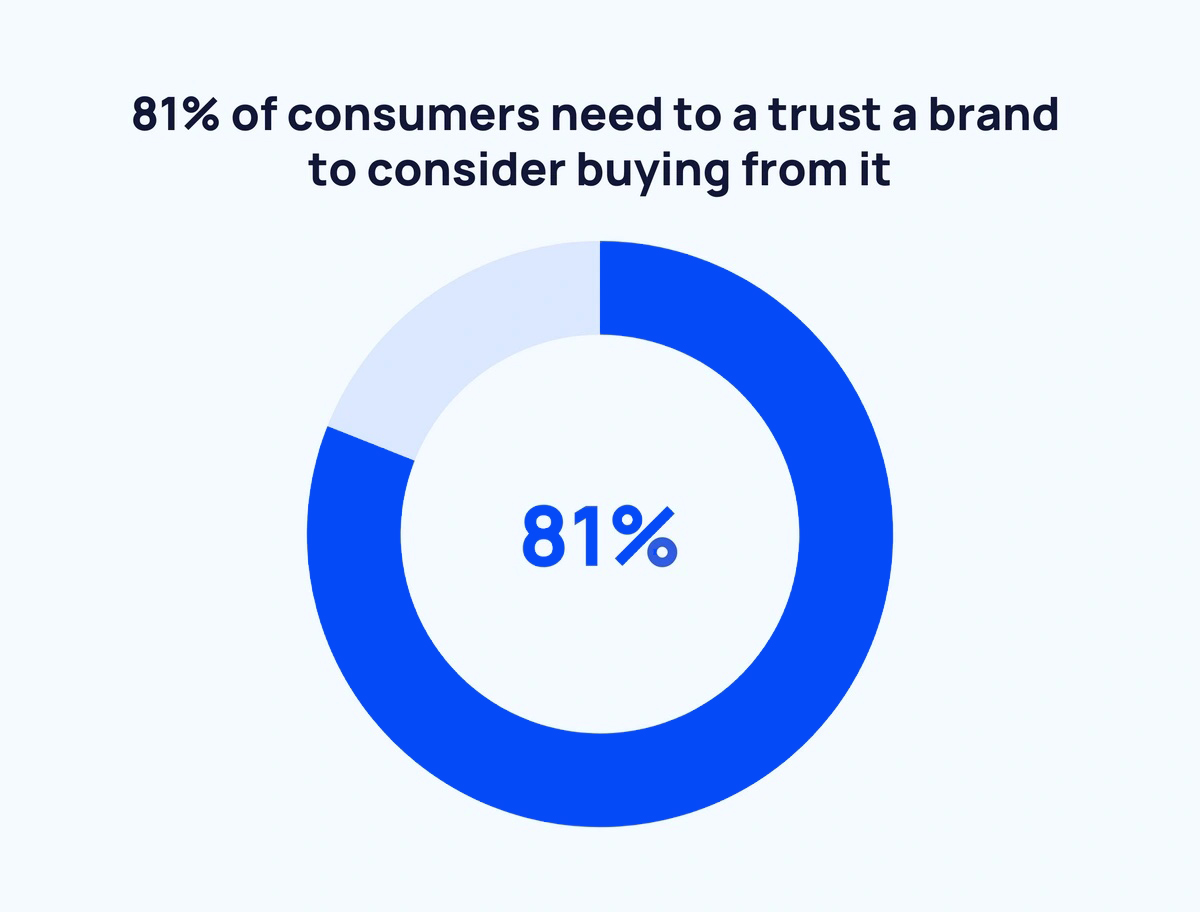
Discover the essence of a branding strategy and its critical role in business success. Learn what branding strategy is and why it’s indispensable for your business’s growth and market presence.
What is a Branding Strategy?
At its core, a branding strategy is a long-term plan for the development of a successful brand to achieve specific goals. It’s not just about a logo or a slogan; it’s a multifaceted plan that encompasses the overall identity of a brand and how it’s perceived by the world.
Differentiating Branding from Marketing
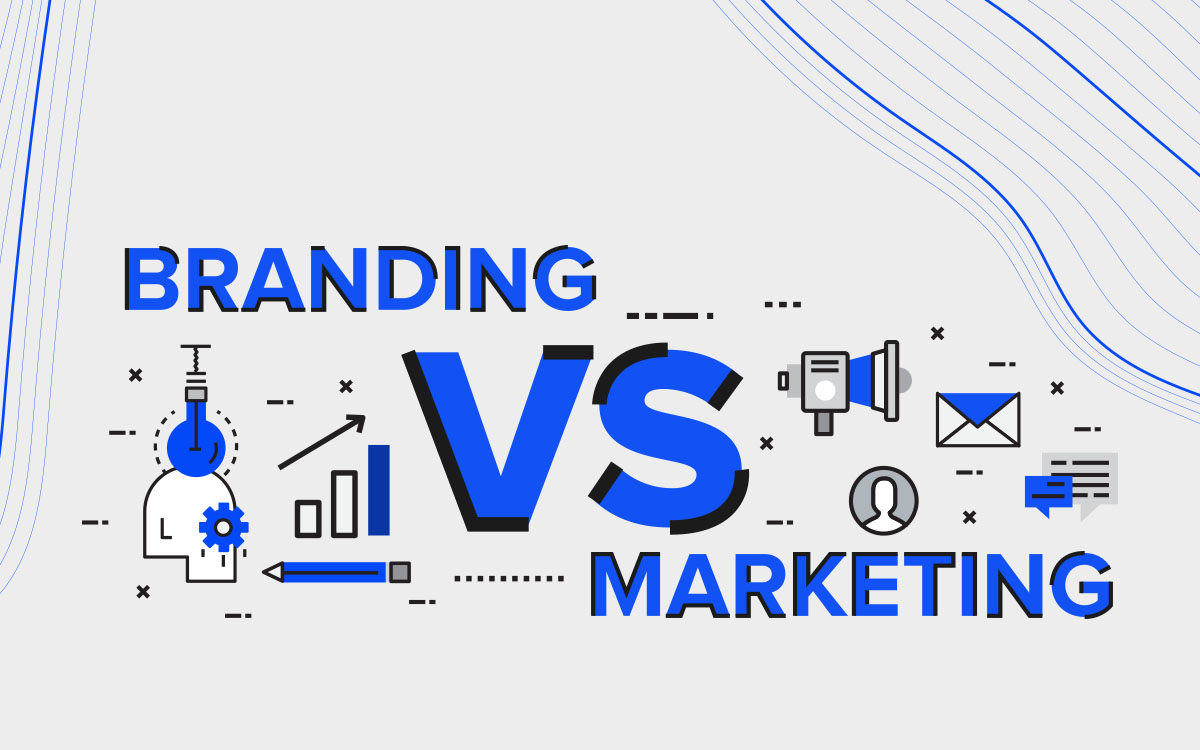
While often intertwined, branding and marketing are distinct. Branding is about creating an identity, while marketing is about promoting products or services.
The branding strategy forms the foundation upon which marketing strategies are built. You can learn more about different between Branding and Marketing in our content.
Role in Business Planning
Incorporating a branding strategy into your business plan is pivotal. It’s not an afterthought but a blueprint that guides how you communicate with your audience, differentiate from competitors, and present your company to the world.
Why Branding Strategy is Important in 2024
As we advance in 2024, the importance of a solid branding strategy has become more apparent. In a digital age where consumer attention is fragmented, a strong brand can cut through the noise and capture loyalty.
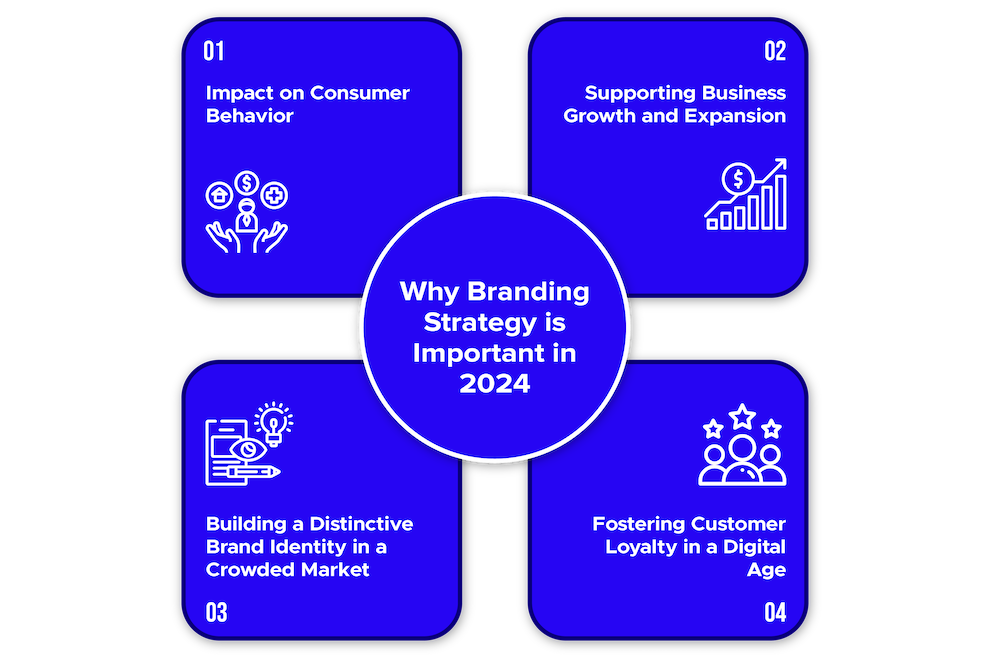
1. Impact on Consumer Behavior
A compelling branding strategy influences consumer behavior. 46% of consumers are willing to pay more for a brand they trust, up from 30% in 2021.
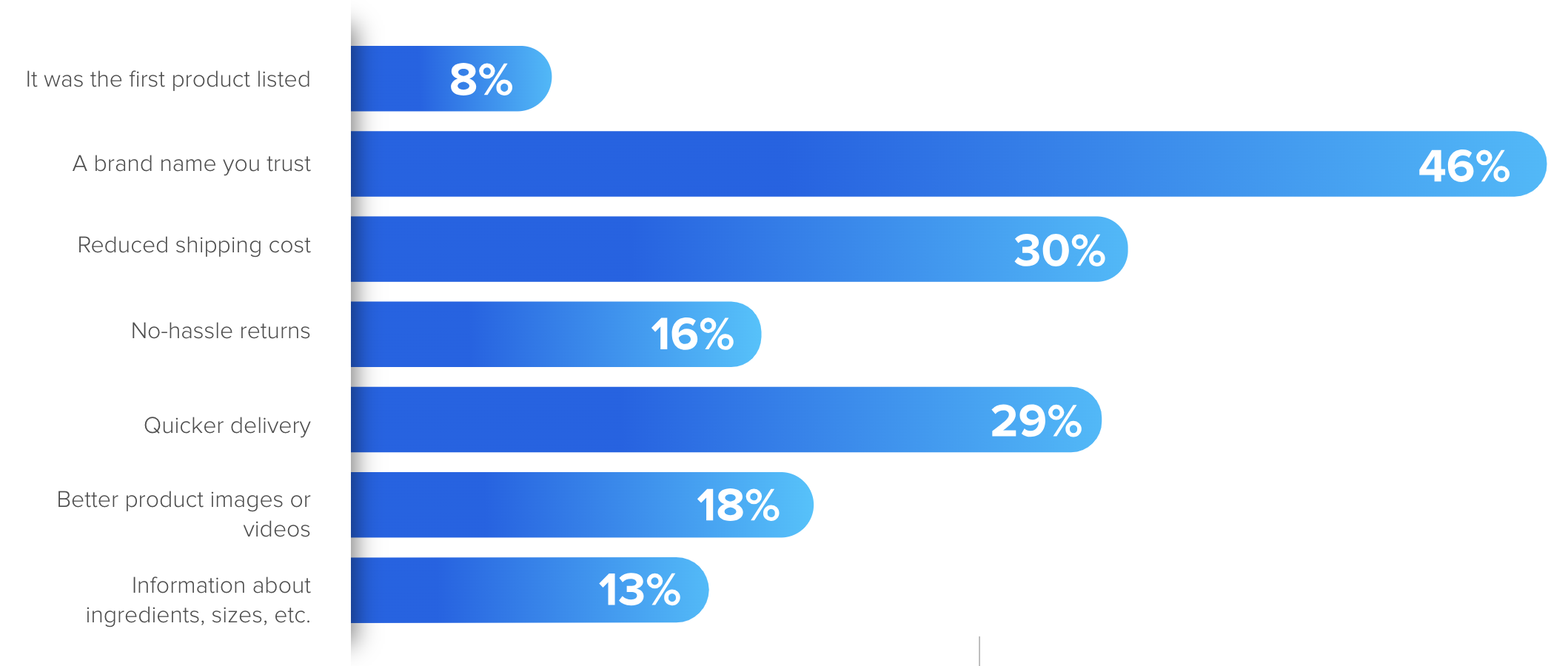
It mean builds recognition and trust, are factor that crucial in a customer’s decision-making process.
2. Supporting Business Growth and Expansion
A strategic approach to branding supports business growth and expansion. Whether you’re entering new markets or launching new products, a solid branding foundation provides the leverage needed for successful ventures.
Data by info.marq.com 68% of companies report that brand consistency has contributed 10% to more than 20% of their revenue growth.
And Brand Strategy gives you the framework to scale your brand in a way that’s aligned with your business objectives.
3. Building a Distinctive Brand Identity in a Crowded Market
In a world brimming with competition, a distinctive brand identity is vital. A well-crafted branding strategy helps differentiate your business, making it stand out in a crowded marketplace.
Acccording to Zippia.com 75% of consumers remember a brand by its logo.
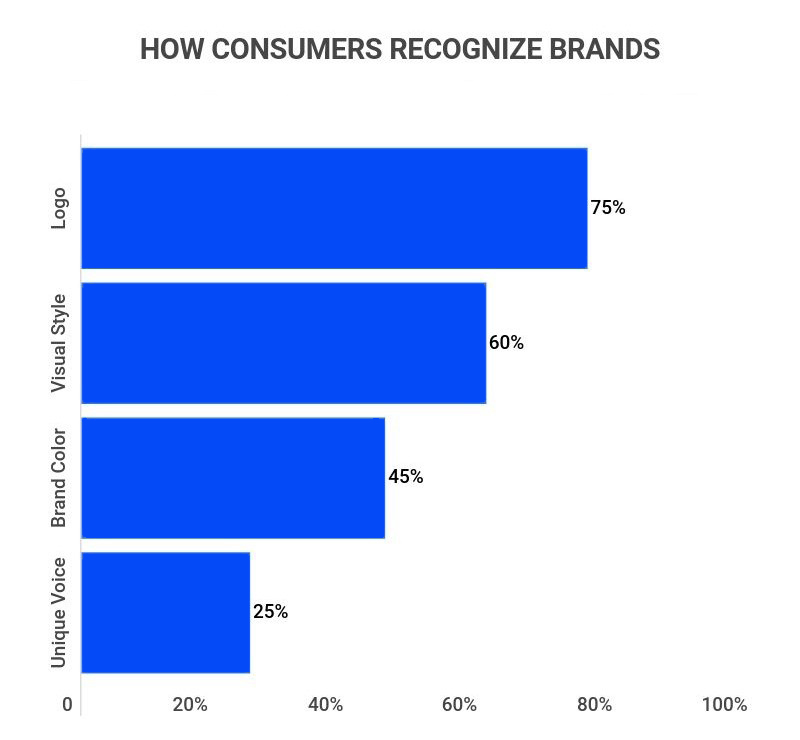
This distinction is not just about being different; it’s about being authentically you, resonating with your target audience, and creating a memorable impression.
4. Fostering Customer Loyalty in a Digital Age
Research by zippia about customer retention statistics show 65% of a company’s sales come from existing loyal customers.
A strong branding strategy fosters loyalty by establishing an emotional connection with your audience. It’s about creating a brand experience that aligns with their values and expectations, leading to deeper engagement and repeat business.
Core Elements of a Branding Strategy
Crafting an effective branding strategy involves several core elements. Each component plays a crucial role in how your brand is perceived and how it resonates with your target audience.
Brand Mission and Vision
Your brand’s mission and vision statements are the guiding stars of your branding strategy. They articulate your company’s purpose and aspirations, providing direction for all branding efforts.
Example: Google
Google’s mission “to organize the world’s information and make it universally accessible and useful” clearly outlines its purpose.
Their vision to provide an open and accessible internet to everyone directs their branding and business strategies, making them a leader in the tech industry.
Understanding Your Audience
Knowing your target audience is essential. It involves diving deep into customer personas to understand their needs, preferences, and behaviors.
Example: Netflix
Netflix excels in understanding its audience. By leveraging data analytics, they create customer personas to deliver personalized content recommendations, enhancing user experience and customer satisfaction.
By understanding their target audience Netflix had around 247.2 million paid subscribers worldwide as of the third quarter of 2023.

Data from Statista.com
Brand Values and Culture
Your brand values and culture should reflect in every aspect of your business. They are the essence of your brand personality and play a significant role in attracting like-minded customers and employees.
Example: Patagonia
Outdoor clothing company Patagonia is driven by its commitment to environmental sustainability. This value permeates their entire business, from product design to marketing, resonating with environmentally conscious consumers and employees
Branding Identity
Branding identity encompasses the visual elements of your brand, such as logos, color schemes, typography, and design style. It’s a visual representation of your brand’s character and values, creating a recognition and memorable image in the minds of your audience.
Example: Maria Mariana
One of our clients, Maria Mariana has established herself as a trusted expert by collaborating with top financial institutions and esteemed banks in Singapore.

Maria Mariana’s brand identity, as showcased on her website, reflects a blend of professionalism, expertise, and a client-centric approach in the real estate domain.
Unique Value Proposition
Your unique value proposition (UVP) is what sets you apart from the competition. It’s a clear statement that describes the benefits of your products or services, how you meet your customer’s needs, and what distinguishes you from others.
Example : Apple
Apple’s UVP lies in its combination of sleek design, user-friendly interface, and innovative technology. This unique blend sets Apple apart in the tech market, offering a distinct experience that appeals to a loyal customer base.
Brand Voice and Personality
The brand voice and personality should resonate with your target audience and be consistent across all channels. Whether it’s professional, friendly, or quirky, your brand voice is an extension of your brand personality.
Example: Innocent Drinks
Known for its playful and friendly tone, Innocent Drinks’ brand voice reflects a fun and approachable personality, distinguishing them in the competitive beverage market.
How to Build a Brand Strategy
As we continue our exploration of branding strategies for 2024, it’s clear that building a robust and dynamic brand strategy is more crucial than ever. In this section, we’ll guide you through the key steps in creating a brand strategy that not only resonates with your audience but also positions your brand for long-term success.
1. Laying the Foundation: Research and Analysis
Market Research and Competitor Analysis
Before you can build a successful brand, you need to understand the landscape in which you’re operating. This involves comprehensive market research and competitor analysis. By understanding your competitors’ strengths and weaknesses, you can identify gaps in the market and opportunities for differentiation.
Identifying Your Target Audience
Knowing your target audience is the cornerstone of your branding strategy. Develop detailed customer personas, considering their demographics, psychographics, and behaviors. This will help you tailor your branding to appeal directly to the people who are most likely to become your customers.
Analyzing Market Trends for 2024
Stay ahead of the curve by analyzing upcoming market trends. Understanding these trends will enable you to align your branding strategy with what’s current and relevant, ensuring your brand remains appealing and competitive.
2. Developing the Brand Identity
Crafting a Memorable Brand Name and Logo
Your brand name and logo are often the first points of contact with your audience. They should be memorable, reflect your brand personality, and resonate with your target audience. Consider the emotional response you want to evoke and how these elements will be perceived across different cultures and mediums.
Designing a Visual Identity
Beyond the logo, your visual identity includes color schemes, typography, and imagery. These elements should be consistent across all your branding materials, creating a cohesive look that’s instantly recognizable as yours.
Creating a Compelling Brand Story and Messaging
Your brand story and messaging are what connect emotionally with your audience. They should reflect your brand’s mission, vision, and values, and communicate your unique value proposition in a way that’s both engaging and relatable.
3. Implementing and Evolving the Brand Strategy
Strategies for Rolling Out the Brand Identity
Develop a plan for introducing your new brand identity to the world. This could include a launch campaign, updating all your marketing materials, and training your team to communicate your brand message effectively.
Maintaining Consistency Across All Touchpoints
Consistency is key in branding. Ensure that your brand identity and message are consistent across all touchpoints, from your website and social media to packaging and customer service.
Adapting to Market Changes and Consumer Feedback
A successful branding strategy is not set in stone. Be prepared to adapt and evolve your strategy in response to market changes, consumer feedback, and emerging trends. Regularly review and refine your branding to ensure it remains relevant and effective.
Conclusion
Building a brand strategy in 2024 requires foresight, flexibility, and a deep understanding of your audience and market trends. By following these steps, you can create a brand that not only stands out but also grows and adapts with the times.
For personalized assistance in crafting a brand strategy that propels your business forward, reach out to the experts at Neu Entity. With their guidance, you can navigate the complexities of modern branding and position your business for lasting success.
Let’s Talk!
If what you see here is relevant for you and can help you grow your business or organisation, we’d love to discuss further with you. Drop us a message or schedule an appointment with us.
